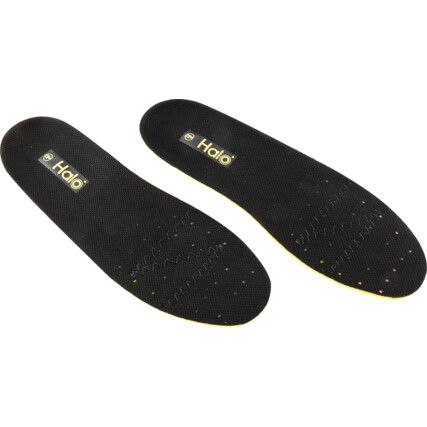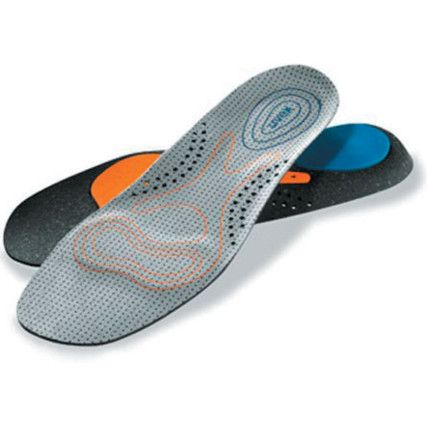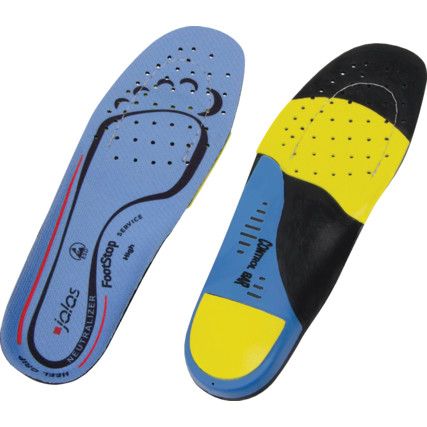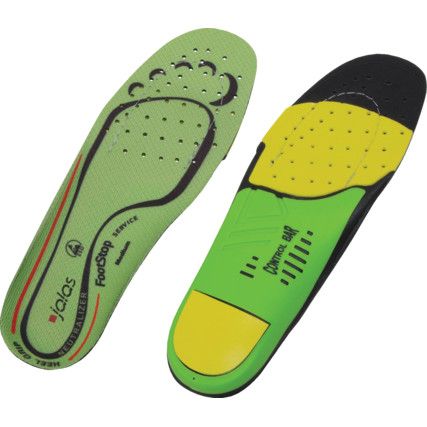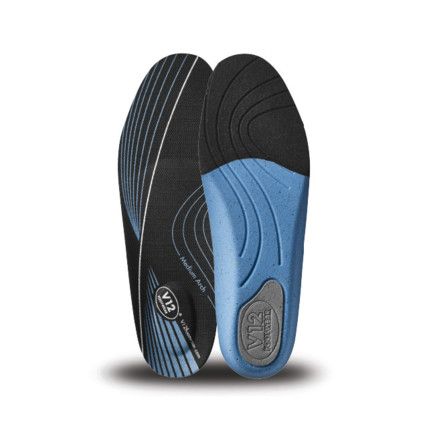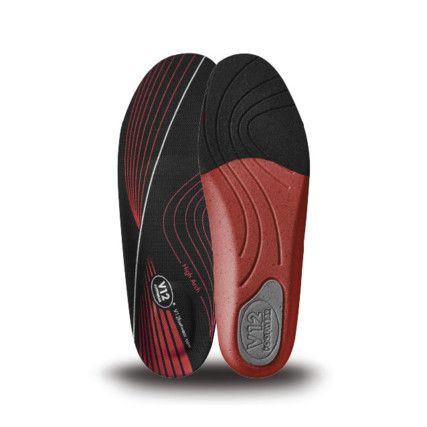Insoles
Insoles are a handy way to achieve the perfect fit from your safety footwear, especially if you have conditions such as flat arches or wide feet. Cromwell offer a wide range or insoles to ensure user comfort throughout the working day, with big name brands like Uvex®, Tuffsafe®, V12® and more you can be sure to find the perfect fitting insole at an affordable price.
What are insoles?
Insoles are, as the name suggests, an inner insert that is placed inside a boot or shoe to provide comfort and support for feet. Pretty much all footwear comes with insoles preinstalled. However, problems can arise when users have difficulty finding the correct sizing of footwear or if they have a condition such as flat feet, high arches or wide feet. This can mean that their footwear fits incorrectly and whilst at first, these problems may go undetected over time this can cause the body to compensate for the adjustments in posture etc, and cause health issues like chronic pain.
Why use insoles?
There are many reasons to use an insole, comfort, warmth, and corrective.
• Insoles can help provide a better fit - Due to the variation in shoe sizing between brands, it can be hard for individuals to find the correct fitting footwear. Most half sizes are hard to come by and then there is the issue for people with wider than average feet. In some cases it's best to go a size bigger and purchase insoles to ensure a snugger fit. A better fitting shoe or boot helps prevent problems cause by rubbing such as blisters.
• Improve wearer posture - Certain types of insoles are designed with corrective applications in mind. For example, those with flat feet require arch support, whilst those with high arched feet will need more support in the heel to relieve pain cause by pressure.
• Thermal insulation - Adding an insole can help your feet keep warmer in colder weather, as a snugger fit traps more warm air inside the footwear.
Types of insoles
• Cushioned - These can be made from either foam or gel and are designed to provide overall cushioning from impact to feet. They don't tend to offer much support to the arches of feet however.
• Arch supported - These types of insoles are designed to correct posture and position you biomechanics. They are useful for individuals who have high arches or flat feet, helping prevent ankles from rolling inward or outwards (overpronation) which can affect the position of your knees over time. They come in multiple sizing options for a more individualised fit.
• Mouldable - These types of insoles are moulded to the shape of your feet, typically through heat. They are designed more for comfort than correction as they replicate the sole of your feet in the moulding process so are unlikely to correct any poor posture.
• Orthotics - These types of insoles come in two forms, accommodative and functional. Accommodative insoles often prescription based, and custom fitted to help prevent discomfort caused by ulcers blisters and other conditions caused by problems such as diabetes. Functional insoles are used to treat foot injuries and promote healthy and functional locomotion.
Considerations when choosing an insole
• The size of the insole - Depending on the level of support that you need either a partial or full insert maybe the correct solution. Most full-size insoles can be trimmed to fit the footwear as required.
• Arch support - Whether you have a high arch or flat feet you will require an insult that can adjust the positionality of your feet and improve your overall posture.
• The type of footwear being used - With safety footwear it is recommended that you pick an insult that is durable enough to stand up to the trials and tribulations of heavy work. Smaller flimsier insoles might provide initial comfort but will not last as long.
• Antimicrobial technology - this can help prevent the build-up of bacteria and other microbes like fungus spores helping to keep your feet fresh throughout the day. This is particularly useful if you are working long shifts in your safety boots.
• Metatarsal and heel support - This is particularly useful if you're suffering from pain in the balls on the heels of your feet.
FAQs
What are the best arch supports for flat feet?
Depending on the severity of your flat feet there are tow main options. A supportive heel cup to help prevent overpronation, or a low arch with strong support.
When should I replace insoles?
It is recommended that you replace your insoles every 6 to 12 months. Over time and with use the weight of your body will compress the material and they will stop offering as effective support.
